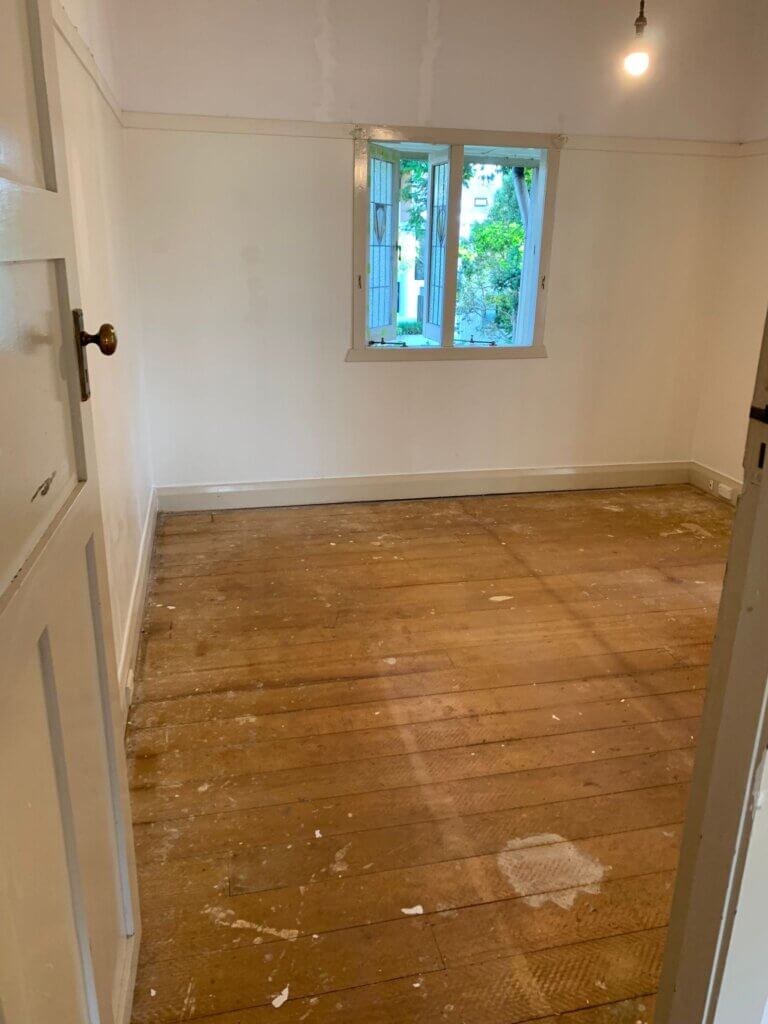It is remarkable how innovations bring out radical effects in our lifestyle. In the past, people used to lay flooring in their homes using wood planks directly cut from the tree. But, in the modern era, there are several approaches to wood flooring. The longevity of the floors depends upon the type of wood and maintenance. Upgrading and maintaining hardwood floors depends on the wood used for flooring. As the wood type changes, sanding and plywood floor Staining techniques change accordingly.
The top wood flooring choices in Brisbane homes are as follows:
- Hardwood flooring
- Engineered hardwood flooring ( PLYWOOD)
- Floating floors
What Is Plywood?
Plywood is an engineered wood made by stacking wood veneers (thin wood slices). The veneers are piled up by applying adhesive between each layer stacked at the right angle to the layer below it. Due to its affordability and sturdiness, it is a good choice for homeowners with low budget. It carries the stain well and can be made into a beautiful patterned floor.
Staining Plywood Steps And Precautions
Staining of the plywood can be done by using oil-based or aqueous-based stain. Oil-based stain is usually preferred due to better absorption by wood layers.
Steps:
- The first step is the preparation of the Plywood Floor Staining. The floor is prepared by cleaning the dust and dirt and sanding it with a fine-grit sandpaper. Plywood floor sanding should be done carefully to prevent damaging the top wood layer. Sanding of the floor should be done in the direction of the grain for a smooth finish. Wipe the floor with a damp cloth to remove dust from sanding.
- After carefully sanding the top layer of the plywood, it’s time to apply the stain. First, stain the edges and corners of the area using a brush. Stain the rest of the floor using a paint roller or a sprayer. You can also use a rag to apply the stain. Make sure to stir the stain before use and apply in the direction of the wood grains.
- Excess paint in some areas creates blotchiness and uneven look. After 2-3 mins of stain application, it’s time to wipe off any excess paint. Use a clean for this purpose and wipe in the direction of grains.
- Finish the staining by applying a polyurethane coating or any other lacquer.
Difference Between Plywood And Hardwood Floor Staining
| Hardwood staining | Plywood staining |
| · The durability of hardwood protects the stain for a long time. | · Stain longevity depends upon the type of wood veneers in plywood. |
| · Smooth appearance of stains on the hardwood floorboards. | · Veneer patterns are visible after staining. |
| · Forgiving sanding due to thicker surface. Even staining appears after sanding of the required depth. | · Sanding is a critical step. Sanding below a limit can lead to top-layer removal. |
| · The stain penetrates deep into the hardwood plank, ensuring a smooth and even finish. | · The stain may be limited to the top few layers as the inner veneers are made of low-quality wood and may not take the stain well. A consistent look is achieved with less stain depth. |
Conclusion:
It is evident from the above discussion that both plywood and hardwood floors take the stain well and give a luxurious feel to the home. Regular maintenance and care regimes increase the stain longevity and keep your wooden floor shiny and clean.
You should always hire a professional for error-free work. Budget Floor Sanding is a team of professionals who commit to the job, whether it is floor sanding, repairing, renovation, or staining.
Call us now to get a free quote at 0418 882 678.


